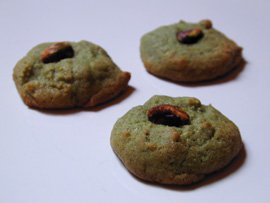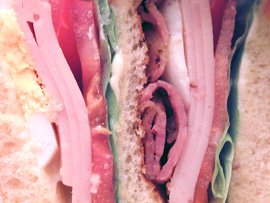
At the Bar à Veloutés I hosted a few weeks back, one of the little accessories you could choose to dip in your velouté was an Allumette Noisette-Thym, a hazelnut and thyme cracker shaped like a matchstick. These allumettes were a personal favorite of mine, because they happened to be a recipe I had created from scratch, simply based on the idea that we’d had and the feel/look/taste of the dough as I was working with it. I enjoyed their crunchy crumbly texture and deep flavor very much — and was pleasantly surprised, too, for baking by instinct is usually a rather risky endeavour.
As I was working on baking a large amount of them (around 130) for the big day, I underestimated the yield of my basic recipe (always better than the other way around) and ended up making about twice more dough than I really needed. No matter, thought I, you can never have too much of a good thing, and I simply froze the excess (divided in small lumps) for later use : it would be nice to bake a little batch for an impromptu apéritif one of these days.
But then a few days later (while at the Opéra, of all places) a better idea knocked at that little door I have in the back of my mind, with a shiny brass handle and a sign that reads “Ideas : Enter Here”. I welcomed it, sat it comfortably in the petit salon with a cup of tea and a few cookies, and listened : “You could use the leftover dough as a tart crust!”, the idea said.
And the opportunity to do just that arose soon after, as Marie-Laure and Laurence came for dinner this past Saturday. Since I wanted the crust to really shine through, I topped the tart with a zucchini and mascarpone filling, which was subtly flavored and a good match to the hazelnut and thyme. I was also happy with the look of the tart, having tried to arrange the zucchini in a pretty sunray pattern.
And I really liked the idea that for once, it was the crust which expressed most of the tart’s personality, instead of being eternally the supporting actor.







